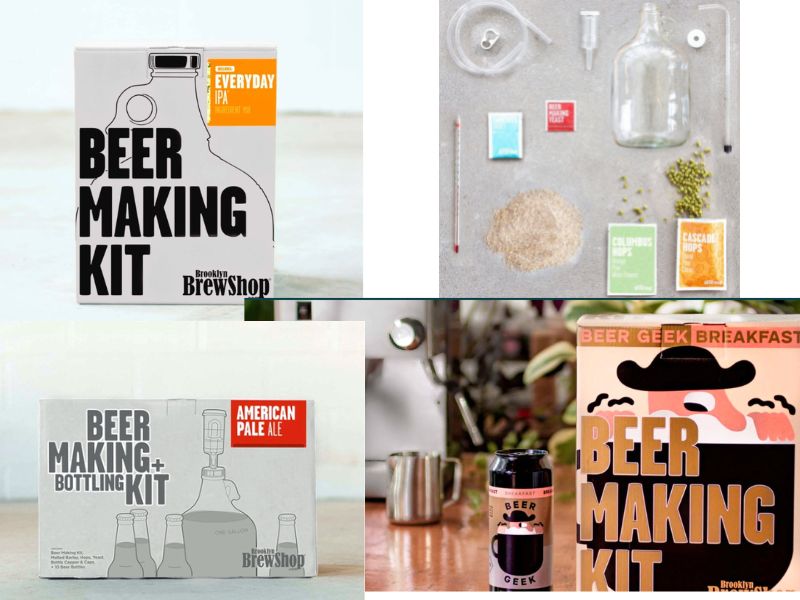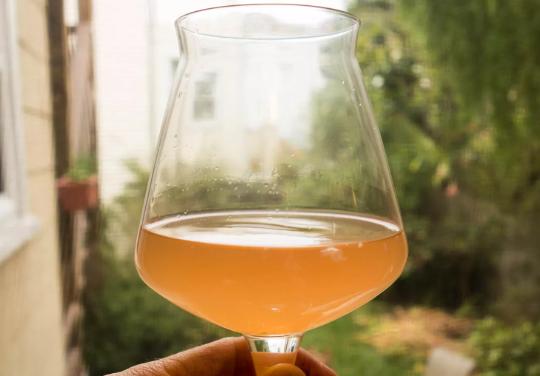There is nothing quite like the satisfaction of brewing your beer. Brewing spontaneously fermented beer is a unique experience and also an exciting one!
Unlike other types of beer, spontaneous fermentation requires less equipment and more patience as you wait for the natural yeasts in the air to ferment your beer.
Spontaneously fermented beer is a unique and exciting style of beer to make. It involves using wild bacteria and yeasts naturally present in the environment rather than relying on commercial yeast strains.
This can produce unique flavors and aromas, making it an excellent choice for adventurous brewers. Here’s how you can start brewing your own spontaneously fermented beer home.

Get started today with FarmSteady’s all-in-one kits, see how easy fermenting drinks can be, and be guided on making the perfect spontaneously fermented beer!
What is Spontaneous Fermentation?
Spontaneous fermentation is one of the most romantic procedures in the beer manufacturing industry. However, it’s also maybe one of the most confusing. You’ll also hear of spontaneously fermented beer called “wild beer.”
Naturally occurring airborne bacteria allows spontaneously fermented beers to ferment. as opposed to commercial yeast.
They are incredibly unpredictable as a result. In other words, releasing that old control results in “wild ales.”
Traditional beers have known qualities due to particular cultured yeast strains, whereas spontaneously fermented beers take on the features of their environment.
Many people believe that spontaneous fermentation always results in sour beer. A brewer can still create a sour beer without using this method.
In actuality, lambic is the spontaneous fermentation-based variety that is most well-known. An entire article might be written only about this type of beer. Fortunately, we have a beginners’ manual for you.
Beers receiving additions of isolated cultures or bottle dregs are not spontaneous and are discussed under mixed-culture fermentation and commercial sour beer inoculation.
Brewing Spontaneously Fermented Beer at Home
Brewing spontaneously fermented beer requires patience but can be incredibly rewarding when done correctly!
By following these steps closely, you should be able to brew fantastic-tasting spontaneous beers right in your very own home! If a brewer plans to spontaneously ferment beer, they should understand what wild yeasts and bacteria are in their environment.
Gather Your Supplies
The first step in brewing spontaneously fermented beer is gathering all the necessary ingredients and equipment.
Malt extract hops, a large stainless steel pot for boiling/cooling, an airlock or blow-off tube in the fermenter, bottles for bottling the beer, sanitizer for cleaning/sanitizing equipment, priming sugar for carbonating your beer in a bottle (or keg), and yeast nutrients are all necessary.
The first step in brewing your spontaneous beer is to gather your supplies. You will need malt, hops, water, a wort chiller, yeast nutrient, and yeast. You may also want to purchase additional items, such as a thermometer and a stirring spoon. If you are new to brewing beer, it is recommended that you invest in good-quality supplies to ensure quality results.
Prepare Your Wort
Once you have gathered your supplies, it’s time to prepare your wort (unfermented beer). Start by boiling two gallons of water in a large pot on the stovetop.
Once the water is boiling, add malt extract and aged hops according to the recipe instructions. Stir while boiling for approximately one hour or until the desired flavor has been achieved. Once finished boiling, remove from heat and allow to cool down before moving on to the next step.
This should be done as quickly as possible to prevent any unwelcome bacteria or wild yeasts from entering the wort during the fermentation process. It’s best to cool wort using an ice bath or a wort chiller to ensure rapid cooling. Once cooled to around 70° F (21° C), it’s time to move on to pitching your yeast!
Add Yeast Nutrient
Once your wort has cooled to room temperature (approximately 70-75 degrees Fahrenheit), it’s time to add yeast nutrients. Yeast nutrient helps speed up fermentation and ensures enough nutrients available for optimal yeast growth during fermentation. Add one teaspoon per gallon of wort before pitching (adding) your yeast.
Pitch Yeast
You’re introducing wild bacteria and yeasts into your brew when pitching yeast into your cooled wort.
This will kick off fermentation and begin producing alcohol over time. To ensure that these microbes have enough oxygen to perform their functions properly, you’ll want to aerate your cooled wort by stirring vigorously or shaking it in a container before adding your yeast.
The final step in the brewing process is pitching your yeast into the cooled wort mixture. Carefully pour one packet of dry yeast into the mixture and gently stir with your spoon or another utensil.
Cover the pot with aluminum foil or another suitable cover and allow it to sit undisturbed at room temperature for 24 hours before transferring it into bottles or kegs for storage or consumption later on down the road!
What Is Coolship Brewing?
Coolship brewing is one of the most popular methods for spontaneously fermented beer. In this technique, the hot wort is poured into an open-air vessel called a coolship (hence the name).
The wort is then cooled in the coolship overnight so that wild yeast and bacteria can enter it from the surrounding air.
The next day, the cooled wort is transferred into fermenters with additional hops for flavoring. After that, all you have to do is wait for up to 18 months for your beer to finish fermenting!
Caring For Your Beer
As mentioned earlier, spontaneous fermentation takes a long time, so it’s crucial that you properly care for your beer during this process.
Ensure that your fermenters are securely sealed off from outside air so that no wild yeasts or bacteria enter them while aging.
Also, ensure they are stored in a cool place; sudden temperature changes can negatively affect your beer’s flavor profile.
Lastly, taste tests frequently will help guide your decisions on when your beer has finished fermenting and if any adjustments are needed before bottling or kegging it.
RELATED: All in One: Electric Beer Brewing Systems
Conclusion
Spontaneously fermented beers offer unique flavors and aromas found nowhere else! With patience and dedication, you can make this delicious drink home using just a few simple ingredients and equipment pieces.
Always store fermenters in a cool place away from outside air and taste test frequently! With these tips in mind, we wish you luck on your journey into spontaneous fermentation!
Rad Next: Making Ginger Beer (Without Equipment!)




